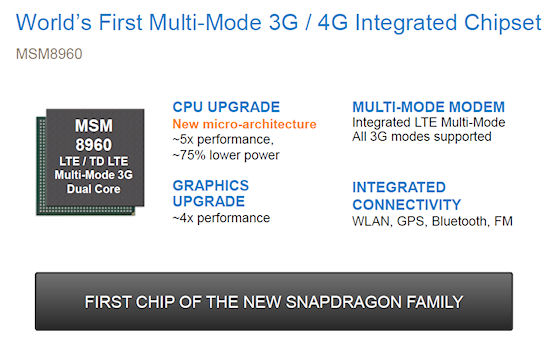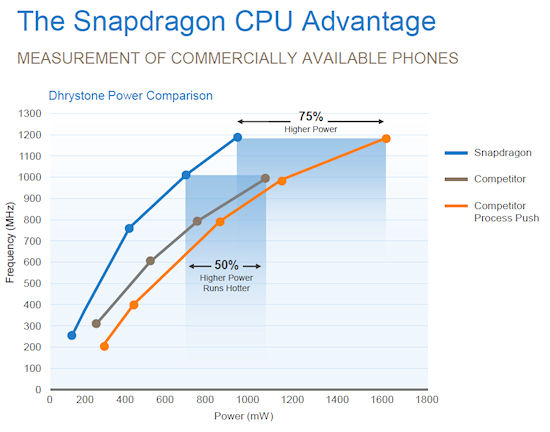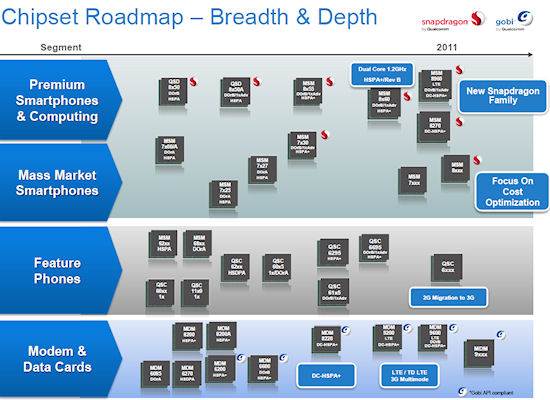Cementing its position
Qualcomm itself admits it doesn't give good roadmap. At its recent analyst day QCT (Qualcomm CDMA Technologies - the chip bit) group president Steve Mollenkopf attempted to address that shortfall by offering a bit more insight into future generations of its smartphone SoC - Snapdragon.
The was the unveiling of a roadmap, but it didn't really add a lot more to what has been available since the summer, or even the start of the year. That roadmap is the first slide below, but strangely absent is the QSD 8x72, which is the dual-core 1.5GHz chip Qualcomm has been, until recently, so keen to crow about. The reason is that Mollenkopf wanted to focus on the first of its new family of 28nm chips.
The new big daddy chip for 2011, it seems, is the MSM 8960. The second slide doesn't mention clock speed, but it has previously been advertised as a dual-core 1.2GHz chip running the latest Adreno 220 graphics core.
As you can see, this potentially offers five times the CPU performance, four times the graphics and - remarkably - a quarter of the power consumption of the original Snapdragon. It will start sampling next year, so that's a bit behind what Qualcomm was hoping previously.
Mollenkopf was keen to talk up the advantage of Qualcomm designing its own chip architecture. Not only does it mean Qualcomm is able to bring products to market faster than competitors who license ARM designs, he said, but it enables Qualcomm chips to operate at a better power/performance ratio. The third slide shows an MSM 8x55 versus an unnamed Cortex A8 chip.
But Mollenkopf seemed as excited about the ‘multi-mode' nature of the MSM 8960 as its performance; it will be the first chip to integrate 3G and LTE (4G). This combination of performance, power draw and 4G looks like a pretty compelling proposition and should halp Qualcomm to cement its position at the smartphone chip leader in 2011. No wonder it's not bothering to talk about the QSD 8x72.
Qualcomm also reaffirmed its outlook for the 2011 fiscal year, which in these uncertain times seems to have been enough to lift its shares by around five percent.
















